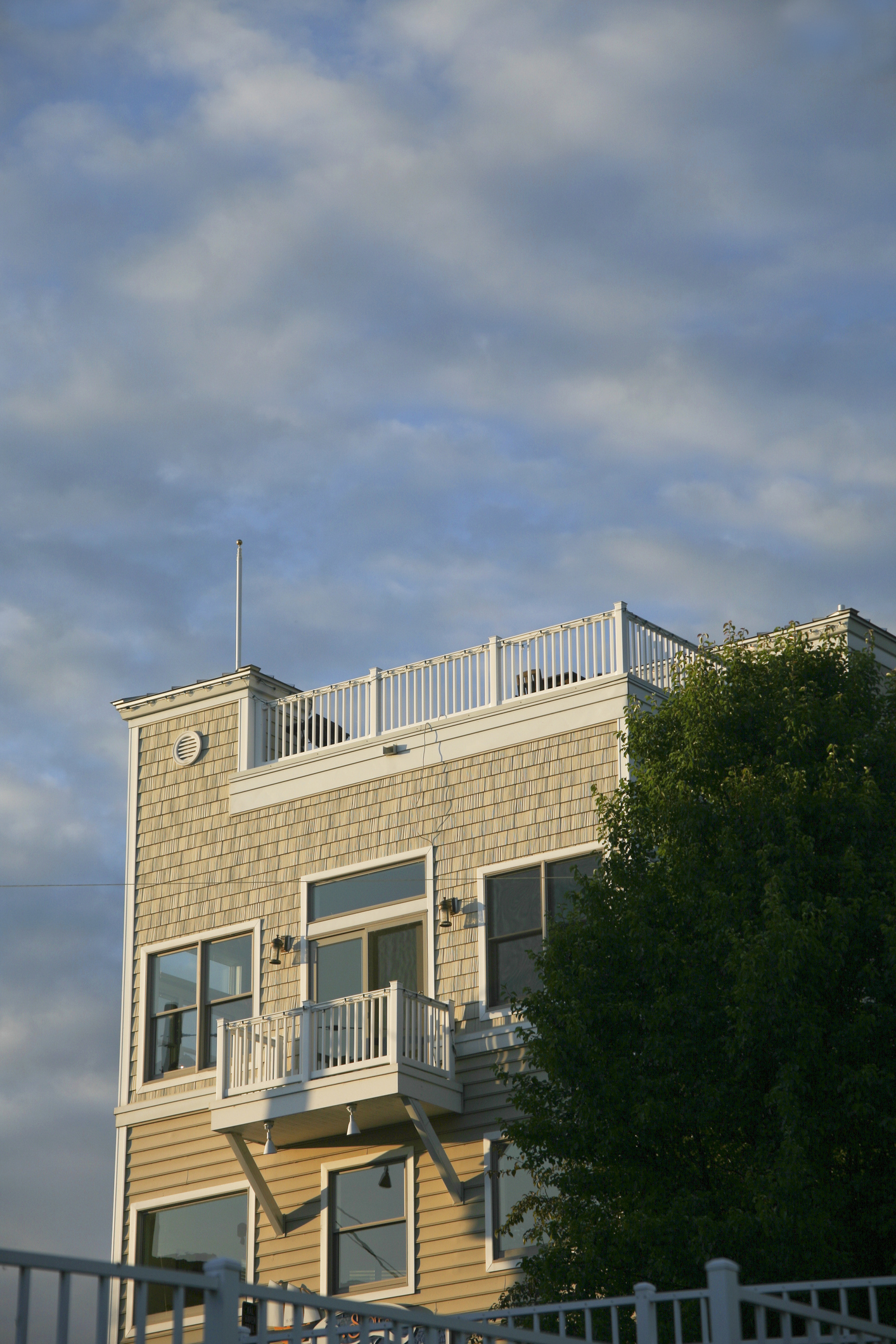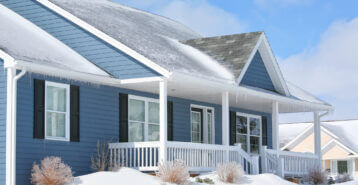Are you doing a roofing project?
Modernize can pair you with three to four pros in your area, so you can compare options and save time and money.
If you hail from the New England area—or have just visited Cape Cod—you’re well versed in the distinct charm and quaint appeal that is the rooftop widow’s walk. These features call to mind the deep regional history of the coastal northeast, and they add a unique touch to modern homes in other parts of the country, as well. They may have once been a way for wives to keep an anxious vigil over the tossing seas beyond, but thankfully, now, they have a more relaxing function. Homeowners use them as a lofty secondary outdoor space for lounging, or an additional indoor spot for a tucked-away guest bedroom.
But what if you weren’t lucky enough to snag a home with a widow’s walk already installed? Is there any way to add one to your home as a retrofit project? The answer, like most home improvement jobs is: “Of course you can—but do you want to?” While a widow’s walk may capture the heart of a unique historical time period and thus seem romantic, they’re not exactly the most practical embellishments for your home, particularly if you want them to be functional. Due to modern building regulations, installing a widow’s walk adds up to some serious construction. However, if you’ve heard that and your heart is still set, here’s some information to get you started.

Gauging Your Home’s Current Appearance
You don’t want to install a widow’s walk on a modern-style home, obviously—it would look strange and out of place. Many home building features and architectural designs connect to a particular time and place, and a widow’s walk is no different. In particular, these structures integrate seamlessly on Queen Anne or Victorian homes. Cottages or Cape Cod homes sometimes feature widow’s walks as well, particularly if they’re located near the ocean.
In fact, almost any historical or classic home plan can be embellished by this feature. If your home has a less ornate architectural design, go for a boxier, simpler widow’s walk. You can even integrate the widow’s walk as part of a second-story porch, or keep it entirely enclosed, as well. There are a lot of options out there, so it’s best to take full stock of what you want and need from your widow’s walk before you begin to build.
Designing Your Widow’s Walk—Amending for Size
Generally, most building codes require that open railings on roofs measure at least 36 inches high to prevent falls. That means that on all but the largest homes, a widow’s walk that sits directly on top of the roof’s surface may seem a little too large and imposing. You definitely want the widow’s walk to work as a well-integrated part of your home’s architecture—you don’t want your roof to look like it suddenly sprouted a growth, after all.
There is a solution, but it adds complexity to your design. The way to get around the railing regulation is to sink the widow’s walk slightly below the roof surface. This way, you can have solid walls up until the point where they meet the roof surface. Using this technique, you can shorten the railings so they don’t seem so out of place.
Find the Right Contractor for Your Roofing Project
Whether you’re ready to begin your project now or need some expert advice, our network of contractors are here to help. With a few simple questions, we’ll find the best local professionals for you
Unfortunately, however, that means making a major alteration to your home. It will require cutting into your roof’s sheathing and changing its structural integrity. That’s not to say that it can’t be done, just that the romance of a widow’s walk may not seem worth it when all’s said and done—especially when there are easier options out there like balconies and rooftop decks.

What Type of Roofing Material Works for a Widow’s Walk?
Classically, widow’s walks—or porticos, as they’re also known—have been roofed with a protective copper pan outfitted with a drainage system to keep water from pooling on the surface. Copper can be expensive though, so often a more modern choice is to opt for EPDM rubber roofing—a popular option for homes with flat roofs.
No matter what type of material you choose, though, you’ll likely have to pay closer attention to your roof and its maintenance. Anytime you introduce a flat surface to your home’s rooftop, you make yourself more vulnerable for leaks and ponding water (which can lead to other issues, like roof damage and mold). Flat surfaces require much more frequent replacement than sloped roofs. Additionally, you’ll have keep an eye on the drainage system, and clean it regularly—at least twice a year. If a drainage system backs up on a flat roof, that can be really bad news, since it can cause water to pool on the roof surface.
All in all, a widow’s walk is a big project—but that doesn’t mean it’s impossible. Soon enough you’ll be casting an eye out to the high seas beyond, while you sip a drink and relax on your new rooftop lounging spot. For projects like this make sure to hire a local roofing contractor to safely get the job done.
Find the Right Contractor for Your Roofing Project
Whether you’re ready to begin your project now or need some expert advice, our network of contractors are here to help. With a few simple questions, we’ll find the best local professionals for you
Reviews from Real Homeowners
Welcome to Homeowner Resources! We are the Modernize blog. Modernize pairs more than 3 million homeowners a year with pre-vetted contractors in their area. This blog started because we believe homeowners should know everything about their homes, from how their HVAC works to which front door colors they might love. On Homeowner Resources, you can find information on every part of your home, right down to how you can negotiate with contractors to get the best price. Here's more about the blog.
Need a contractor? Learn more about how Modernize finds the right pro for you.



